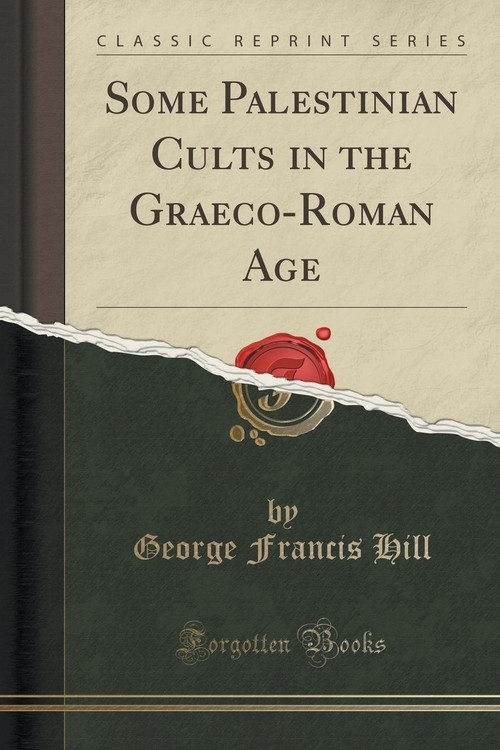Some Palestinian Cults in the Graeco-Roman Age (Classic Reprint)
Hill George Francis
Some Palestinian Cults in the Graeco-Roman Age (Classic Reprint)
Hill George Francis
- Wydawnictwo: FB &c Ltd
- EAN: 9781330382523
- Ilość stron: 22
- Format: 15.2x22.9cm
- Oprawa: Miękka
Niedostępna
Opis: Some Palestinian Cults in the Graeco-Roman Age (Classic Reprint) - Hill George Francis
Excerpt from Some Palestinian Cults in the Graeco-Roman Age
The result is in many cases such complete confusion of ideas that it is impossible to disentangle them from each other; but we may rest assured that the people who believed in, or worshipped, these deities were hardly more clear than ourselves about their significance and origin.
With one exception, none of the coinage of these parts can be dated before the time of Alexander the Great. That exception is the much-discussed group of silver coins of the fifth and fourth centuries b.c, generally attributed to the rulers of Gaza, and including the famous unique piece in the British Museum with the representation of Yahu or Yahweh (Pi. no.1). These coins do not properly fall within the scope of the paper, and I forbear accordingly from dealing at length with this much disputed piece. I will only make two remarks. First, that the reading in seems no longer to be disputed; and that the balance of opinion is in favour of its naming the type, and not being a personal name of some dynast.
Second, this coin is only one of a large group, which represents the most miscellaneous assemblage of deities and monsters. Assyria and Egypt, not to speak of Greece, lend types to these coins (Pi. nos.2, 3);and there seems to be little doubt that the coins were made by people who put on them any types which were likely to attract their customers. Thus the types of archaic Greek, notably Athenian, coins which circulated in the Philisto-Arabian district were freely imitated. The types, therefore, that we find on these Philisto-Arabian coins - as I prefer to call them, rather than coins of the 'dynasts of Gaza' - do not necessarily indicate the existence in Philistia itself of the cults of the deities represented. It follows that the coin with the figure of Yahu does not prove that he was worshipped in Gaza. It may, indeed, be merely the local engravers attempt to represent the Jewish god.
I propose to deal first with one or two cults which are probably of purely Greek or Roman origin, proceeding later to subjects more Oriental in character.
Herod's foundation of Caesarea had an extensive coinage, from the time of Nero to Gallienus.
About the Publisher
Forgotten Books publishes hundreds of thousands of rare and classic books. Find more at www.forgottenbooks.com
This book is a reproduction of an important historical work. Forgotten Books uses state-of-the-art technology to digitally reconstruct the work, preserving the original format whilst repairing imperfections present in the aged copy. In rare cases, an imperfection in the original, such as a blemish or missing page, may be replicated in our edition. We do, however, repair the vast majority of imperfections successfully; any imperfections that remain are intentionally left to preserve the state of such historical works.
Szczegóły: Some Palestinian Cults in the Graeco-Roman Age (Classic Reprint) - Hill George Francis
Nazwa: Some Palestinian Cults in the Graeco-Roman Age (Classic Reprint)
Autor: Hill George Francis
Wydawnictwo: FB &c Ltd
Kod paskowy: 9781330382523
Języki: angielski
Ilość stron: 22
Format: 15.2x22.9cm
Oprawa: Miękka


















